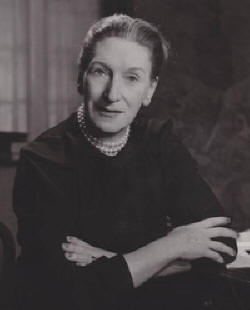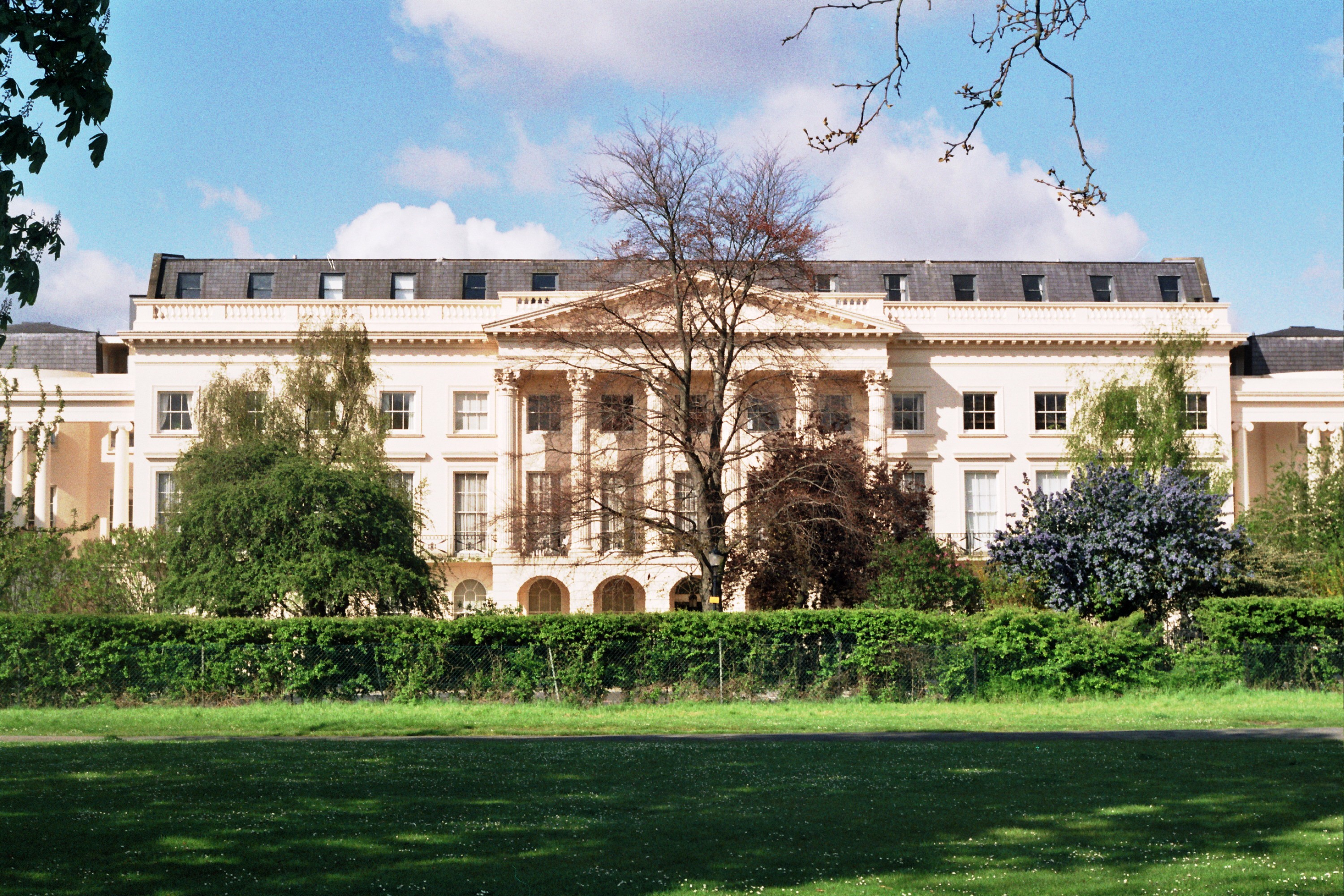

Queer Places:
15 Herbert Pl, Grand Canal Dock, Dublin 2, D02 X289, Ireland
Downe House School, Hermitage Rd, Cold Ash, Thatcham RG18 9JJ, UK
Headington House Lodge, 22 Old High St, Oxford OX3 9HN, Regno Unito
2 Clarence Terrace, Marylebone, London NW1 4RD, Regno Unito
Bowen’s Court, Farahy, Co. Cork, Irlanda
 Elizabeth Bowen,
CBE (7 June 1899 – 22 February 1973) was an
Irish novelist and short story writer. She was part of the Virginia Woolf's
literary circle. Bowen had an affairt with
May
Sarton, during the late 1930s. She had erotically charged relationship
with both Carson McCullers and
Nancy Spain in the 1950s. Never allowing her severe stammer to get in the way of her role as a garrulous hostess, she entertained the likes of
Rosamund Lehman,
Eudora Welty and
Virginia Woolf.
Iris Murdoch attended one of the glittering salons at Bowen’s Court since she was twenty years younger than her hostess and has often been mythologised as something of an honorary man.
Elizabeth Bowen,
CBE (7 June 1899 – 22 February 1973) was an
Irish novelist and short story writer. She was part of the Virginia Woolf's
literary circle. Bowen had an affairt with
May
Sarton, during the late 1930s. She had erotically charged relationship
with both Carson McCullers and
Nancy Spain in the 1950s. Never allowing her severe stammer to get in the way of her role as a garrulous hostess, she entertained the likes of
Rosamund Lehman,
Eudora Welty and
Virginia Woolf.
Iris Murdoch attended one of the glittering salons at Bowen’s Court since she was twenty years younger than her hostess and has often been mythologised as something of an honorary man.
The 1920s were boom years for lesbian literature, seeing the publication of a large range of texts from virulently anti-lesbian works, such as Compton MacKenzie's Extraordinary Women (1928), through relatively traditional celebrations of romantic friendship, such as Elizabeth Bowen's The Hotel (1927), to radical modernist texts with encoded lesbian themes, such as Virginia Woolf's Orlando (1928).
Elizabeth Dorothea Cole Bowen was born on 7 June 1899 at 15 Herbert Place in Dublin and baptised in the nearby St Stephen's Church on Upper Mount Street. Her parents, Henry Charles Cole Bowen and Florence Colley later brought her to Bowen's Court at Farahy, near Kildorrery, County Cork, where she spent her summers. When her father became mentally ill in 1907, she and her mother moved to England, eventually settling in Hythe. After her mother died in 1912 Bowen was brought up by her aunts. She was educated at Downe House School under the headship of Olive Willis. After some time at art school in London she decided that her talent lay in writing. She mixed with the Bloomsbury Group, becoming good friends with Rose Macaulay who helped her seek out a publisher for her first book, a collection of short stories entitled Encounters (1923).
Headington House Lodge, Oxford

Clarence Terrace
In 1923 she married Alan Cameron, an educational administrator who subsequently worked for the BBC. The marriage has been described as "a sexless but contented union."[1] The marriage was reportedly never consummated.[2] She had various extra-marital relationships, including one with Charles Ritchie, a Canadian diplomat seven years her junior, which lasted over thirty years. She also had an affair with the Irish writer Seán Ó Faoláin and a relationship with the American poet May Sarton.[1] Bowen and her husband first lived near Oxford, where they socialized with Maurice Bowra, John Buchan and Susan Buchan, and where she wrote her early novels, including The Last September (1929). Following the publication of To the North (1932) they moved to 2 Clarence Terrace, Regent's Park, London, where she wrote The House in Paris (1935) and The Death of the Heart (1938). In 1937, she became a member of the Irish Academy of Letters.[3]
In 1930 Bowen became the first (and only) woman to inherit Bowen's Court, but remained based in England, making frequent visits to Ireland. During World War II she worked for the British Ministry of Information, reporting on Irish opinion, particularly on the issue of neutrality.[4] Bowen's political views tended towards Burkean conservatism.[5][6] During and after the war she wrote among the greatest expressions of life in wartime London, The Demon Lover and Other Stories (1945) and The Heat of the Day (1948); she was awarded the CBE the same year.
Her husband retired in 1952 and they settled in Bowen’s Court, where Alan Cameron died a few months later. Many writers visited her at Bowen's Court from 1930 onwards, including Virginia Woolf, Eudora Welty, Carson McCullers, Iris Murdoch, and the historian Veronica Wedgwood. For years Bowen struggled to keep the house going, lecturing in the United States to earn money. In 1957 her portrait was painted at Bowen's Court by her friend, painter Patrick Hennessy. She travelled to Italy in 1958 to research and prepare A Time in Rome (1960), but by the following year Bowen was forced to sell her beloved Bowen's Court, which was demolished in 1960. After spending some years without a permanent home, Bowen finally settled at "Carbery", Church Hill, Hythe, in 1965.
Her final novel, Eva Trout, or Changing Scenes (1968), won the James Tait Black Memorial Prize in 1969 and was shortlisted for the Man Booker Prize in 1970. Subsequently, she was a judge (alongside her friend Cyril Connolly) that awarded the 1972 Man Booker Prize to John Berger for G. She spent Christmas 1972 at Kinsale, County Cork with her friends, Major Stephen Vernon and his wife, Lady Ursula (daughter of the Duke of Westminster) but was hospitalised upon her return. Here she was visited by Connolly, Lady Vernon, Isaiah Berlin, Rosamund Lehmann, and her literary agent, Spencer Curtis Brown, among others.[7]
In 1972 Bowen developed lung cancer. She died in University College Hospital on 22 February 1973, aged 73. She is buried with her husband in Farahy, County Cork churchyard, close to the gates of Bowen's Court, where there is a memorial plaque to the author (which bears the words of John Sparrow) at the entrance to St Colman's Church, where a commemoration of her life is held annually.[8][9][10]
My published books: